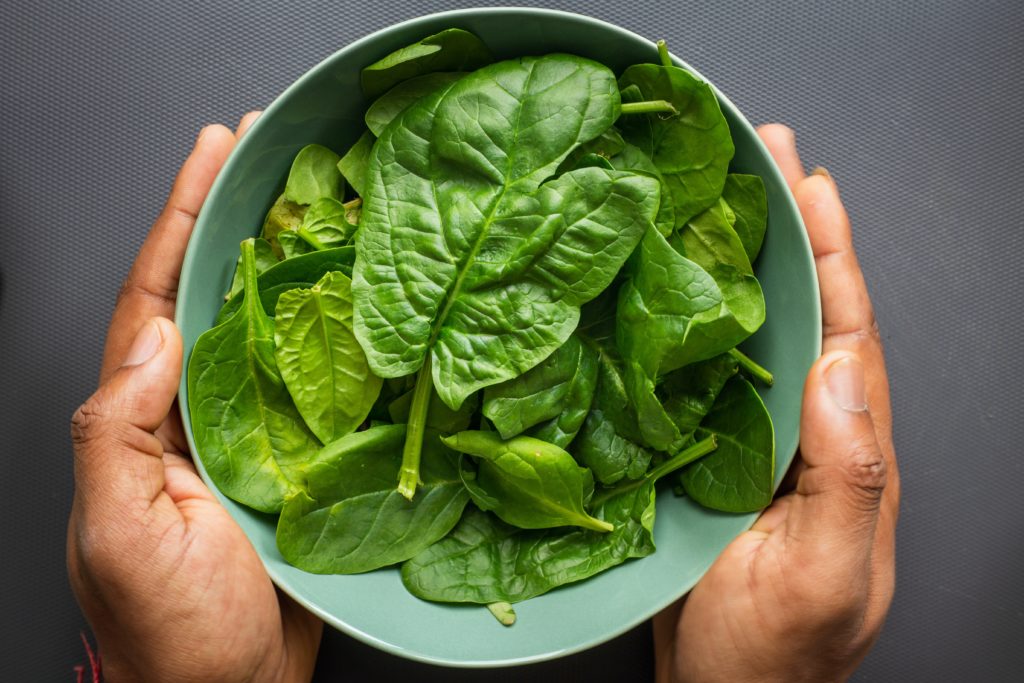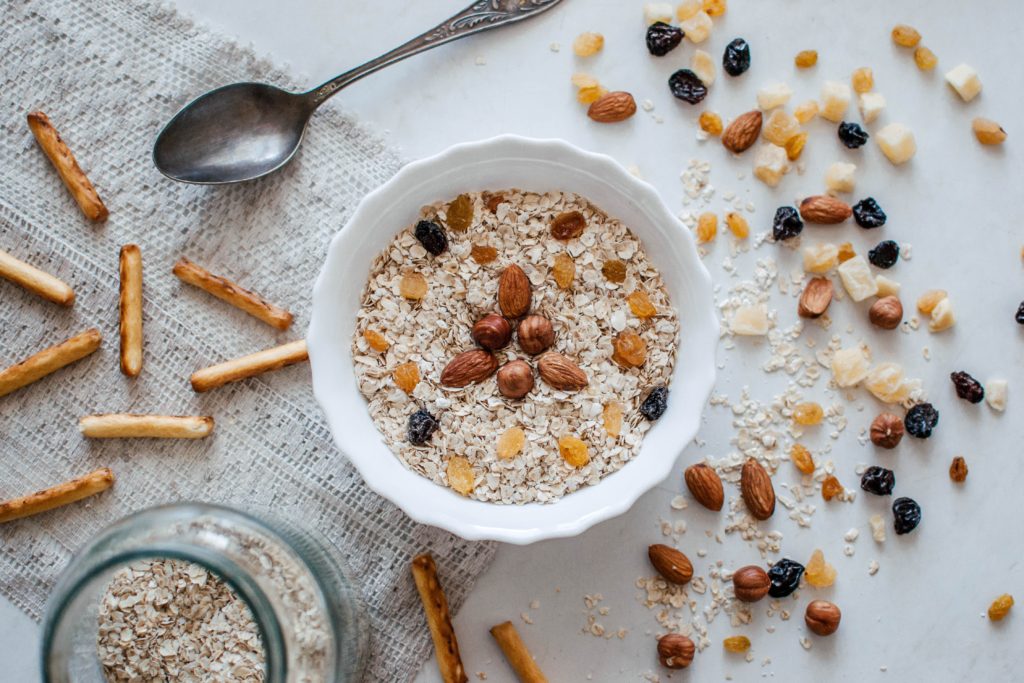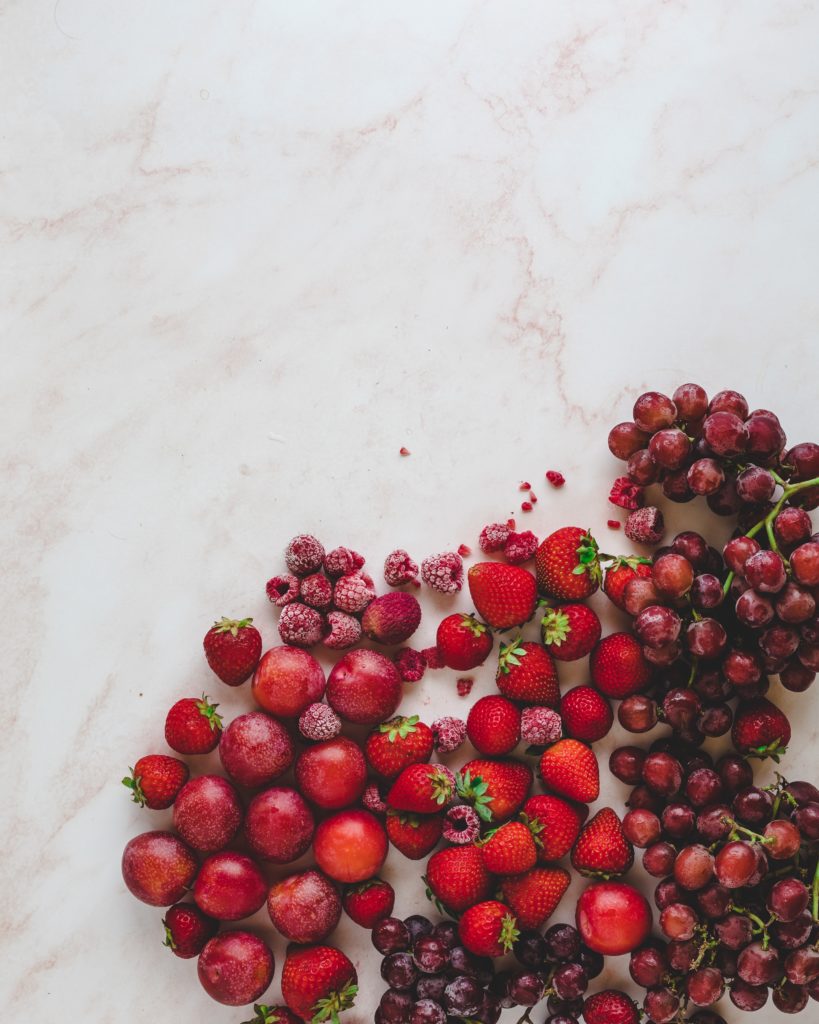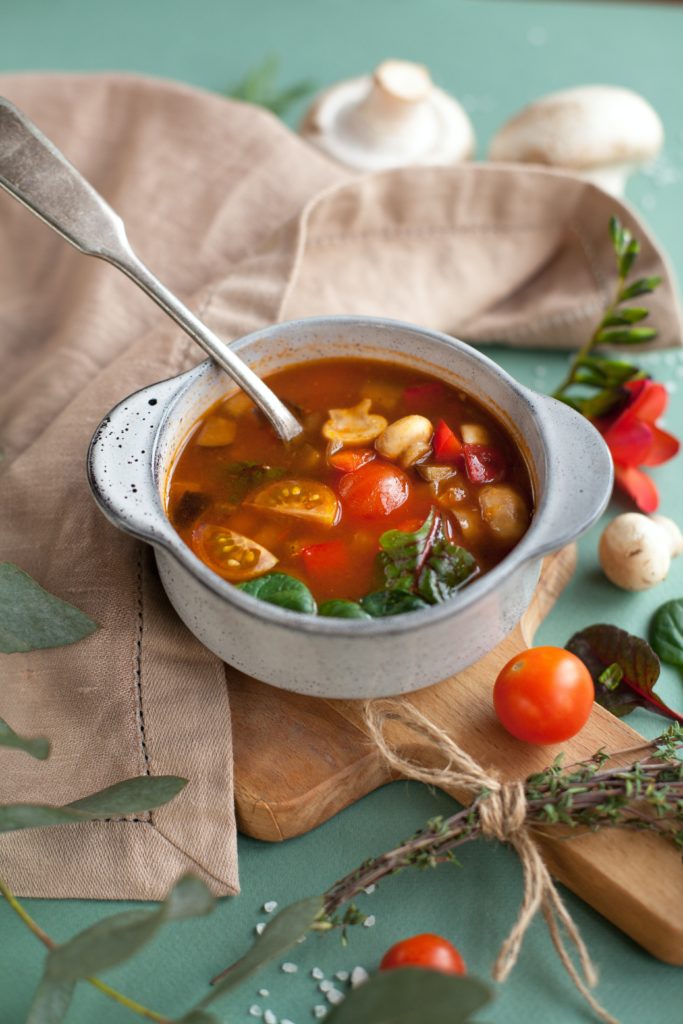The term “cyclical eating” is typically tied to fasting, or eating habits that require increasing a specific food (typically carbohydrates) for one day a week, and removing that food from your diet during the rest of the week. In this article, I would like to open a conversation about another type of cycle and how you can best use foods to fully support your body during each stage.

If you think about it, the most cyclical occurrence in the human body—by definition— is the menstrual cycle. Menstruation is the monthly shedding of the uterine lining and can range in length from twenty-one to thirty-five days. This cycle is categorized into four phases: the menstrual, follicular, ovulatory, and luteal. Each month, hormone levels change as each stage of the cycle takes place and this causes significant changes to mood, energy, and nutritional needs.
As a person with a menstrual cycle, you may have already noticed the difference in your eating habits throughout the month. While I always encourage listening to your body first and foremost—having additional insight may be helpful in facilitating your next cycle because—let’s face it—we all love getting meal inspiration from strangers on the internet!
The Menstrual Phase
You may not know this, but the menstrual phase actually starts off your cycle. Specific length will look different for everyone, but on average it can be anywhere from one to seven days. This is the time of actual bleeding due to uterine lining being shed, and it’s also when all hormone levels are low—with estrogen and progesterone being at their lowest.
For those of you who have or are planning to give birth to babies, this part of the cycle is the most similar to the postpartum period of pregnancy and should be treated as such. It is so important to focus on replenishing your body with blood-building foods that help restore and remineralize.
Warm foods that are rich in iron, zinc, and iodine are imperative. During this time, opt for foods like soup, dark leafy vegetables (spinach, kale), hearty grains (rice, quinoa), and fruits to build up your vitamin C (mango, pineapple) and try to limit inflammatory foods like sugar, caffeine, and alcohol as best as possible.
“Eat with your cycle” tip #1: Try sweet potato chili during the menstrual phase.

The Follicular Phase
Occurring anywhere from day six to day sixteen, the follicular phase marks the rise of estrogen and progesterone levels. During this phase, your body will be preparing for ovulation, thus resulting in increased energy levels. A balanced diet consisting of carbohydrates and protein is the goal in this phase.
Your body is working behind the scenes to prepare for ovulation. Opt for nutrient-dense foods like oatmeal, soybeans, poultry, peppers, and lentils. It may also be helpful to enjoy foods known to metabolize estrogen-like broccoli sprouts and pickled vegetables.
“Eat with your cycle” tip #2: Prepare chocolate peanut butter overnight oats during your follicular phase.

The Ovulatory Phase
The ovulatory phase is fairly short—typically lasting only two days—and can occur anywhere from day fifteen to day eighteen in your cycle. The egg that was being prepared in the follicular phase has been released, estrogen is at its peak, and testosterone and progesterone are steadily on the rise. This is a time where your body will have the most energy, and possibly a smaller appetite due to estrogen’s appetite-suppressing effect.
This is the time where you are the most fertile and will want to nourish your body with foods that support overall bodily functions. During this time, opt for less carbohydrates and more foods with fiber, iron, and antioxidants (nuts, leafy greens, okra, guava, and berries). This may be the ideal time to have lighter meals more frequently.
“Eat with your cycle” tip #3: Try Deb’s Kale Salad with Apple, Cranberries, and Pecans during your ovulatory phase.

The Luteal Phase
The final phase of the menstrual cycle is the luteal phase. This can last anywhere from ten to seventeen days and is often encompassed by premenstrual symptoms (PMS) including low energy, bloating, mood swings, and brain fog.
Once the egg is released, it begins to travel through the fallopian tubes to the uterus and if it is not fertilized, hormone levels begin to lower as the lining of the uterus prepares to shed during the menstrual phase. Eating habits during phase are the most important as they will prepare your body to begin its next cycle.
During this time, opt for magnesium-rich, easily digestible foods to support your body. Soups are ideal for this time of the month (and let’s be honest, when is soup not great?) because you can incorporate lots of vegetables, proteins, and fibers to help any with cramps, headaches, and difficulty sleeping you may experience. Smoothies are also a great option during this time!
“Eat with your cycle” tip #4: Indulge in Spicy Salmon Poke Bowls during your luteal phase.

Remember to Listen
It’s pertinent to note that above all else, listening to your body is the first step in any lifestyle change you decide to embark on. I have found that key to eating cyclical is taking the time to figure out what works for your body, learning how to navigate each cycle as it comes, and—perhaps most importantly—honoring and prioritizing rest alongside nourishment.
Sources
Araujo, Laura. “29 Ways to Find Rest.” The MAPS Institute, 12 Aug. 2020, https://themapsinstitute.com/29-ways-to-find-rest/.
Conners, Rachel. “Chocolate Peanut Butter Overnight Oats.” Bakerita, 28 Sept. 2021, https://www.bakerita.com/chocolate-peanut-butter-overnight-oats/.
Forrest, Carrie. “How to Eat for Your Menstrual Cycle.” Clean Eating Kitchen, 16 Mar. 2021, https://www.cleaneatingkitchen.com/how-to-eat-for-your-menstrual-cycle/.
Gavin, Jessica. “Spicy Salmon Poke Bowls.” Jessica Gavin, 9 Aug. 2021, https://www.jessicagavin.com/spicy-wild-alaskan-sockeye-salmon-poke-bowls/.
Harrington, Mahogany. “A Doula Reminds Us That Postpartum Living Is Harder than You Think (and How to Nurture Your Post-Baby Body).” The MAPS Institute, 20 July 2021, https://themapsinstitute.com/for-good-reason-the-postpartum-period-is-also-known-as-the-fourth-trimester-of-pregnancy-and-it-is-a-period-rich-with-both-joy-and-challenges/.
“Menstrual Cycle Nutrition: What to Eat on (and off) Your Period.” Yoppie, https://yoppie.com/blog/menstrual-cycle-nutrition.
“Normal Menstruation (Monthly Period): Menstrual Cycle & Symptoms.” Cleveland Clinic, https://my.clevelandclinic.org/health/articles/10132-normal-menstruation.
“What to Eat during Your Menstrual Cycle Phases.” Blood & Milk, Parsley Health, 5 Dec. 2019, https://www.bloodandmilk.com/what-to-eat-during-each-phase-of-your-menstrual-cycle/.
“Premenstrual Syndrome (PMS).” Premenstrual Syndrome (PMS) | Office on Women’s Health, https://www.womenshealth.gov/menstrual-cycle/premenstrual-syndrome.
Saltlight. “Sweet Potato Chili.” Allrecipes, https://www.allrecipes.com/recipe/229081/sweet-potato-chili/.
Taylor, Kathryne. “Deb’s Kale Salad with Apple, Cranberries and Pecans.” Cookie and Kate, 24 Feb. 2022, https://cookieandkate.com/debs-kale-salad-with-apple-cranberries-and-pecans/.
